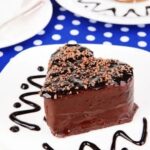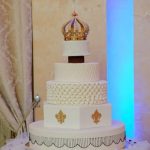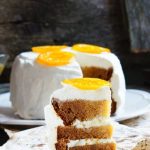Have you ever wondered how professional bakers create those stunning and flawless designs on their cakes? The answer lies in the art of fondant cake decoration. Fondant, a smooth and pliable icing, allows for limitless creativity when it comes to decorating cakes. In this article, we will explore the ins and outs of using fondant to adorn your baked creations, from understanding what fondant is to mastering the techniques involved.
Fondant has become increasingly popular in recent years due to its ability to create smooth, flawless finishes on cakes. Its versatility makes it a go-to choice for many bakers who want to add intricate details or unique designs to their cakes. From elegant wedding cakes to whimsical birthday creations, fondant enables decorators to bring their visions to life with precision.
Understanding the basics of fondant is essential before diving into the world of cake decoration. Fondant is primarily made from sugar and water, creating a pliable dough that can be rolled out and draped over cakes. Its smooth finish gives cakes a polished appearance that is hard to achieve with other types of icing. The popularity of fondant extends beyond just its visual appeal; it also provides structural support and keeps the cake moist by sealing in moisture.
Whether you are a novice baker looking to experiment with fondant or an experienced decorator seeking new ideas, this article will guide you through the entire process of using fondant for cake decoration. Discover the joy of working with this versatile medium as we delve into choosing the right base for your creations, exploring essential tools and materials, applying fondant smoothly onto your cake, creating stunning embellishments with fondants, troubleshooting common issues, serving and storing your masterpieces, and more.
So let’s get started on our journey of mastering the art of fondant cake decoration.
Understanding Fondant
Fondant is a smooth and versatile icing that is becoming increasingly popular in the world of cake decorating. But what exactly is fondant and why has it gained such popularity?
Fondant is a type of icing that is made from sugar, water, and other ingredients such as gelatin or corn syrup. It has a soft dough-like consistency, which allows it to be rolled out and draped over cakes for a seamless finish. This characteristic makes fondant the go-to choice for creating professional-looking cake designs.
One of the main reasons behind fondant’s popularity is its ability to provide a smooth and flawless finish on cakes. Unlike buttercream or ganache, which can sometimes leave an uneven surface, fondant can be rolled out into sheets that create a clean canvas for decorating. This smooth finish allows for intricate details and designs to be easily added onto the cake.
Additionally, fondant offers versatility in design options. It can be colored with food coloring to achieve vibrant hues or left white for an elegant look. Fondant can also be shaped and molded into various decorations such as flowers, ribbons, or even figurines. This flexibility allows decorators to bring their creative vision to life and customize cakes according to any theme or occasion.
Overall, fondant’s popularity stems from its ability to provide a professional-looking finish on cakes and its versatility in creating unique designs. Whether you’re a beginner baker or an experienced cake decorator, mastering the use of fondant can elevate your cake decorating skills to new heights.
| Fondant Properties | Description |
|---|---|
| Smooth Finish | Fondant provides a clean and seamless surface on cakes. |
| Versatility | Fondant can be easily shaped, sculpted, and colored for various design options. |
| Clean Canvas | Fondant allows for intricate designs and details to be added onto cakes. |
Preparing Your Cake
When it comes to using fondant to decorate a cake, one of the most important steps is preparing the cake itself. The foundation of your cake plays a crucial role in how well the fondant will adhere and look on the final product. In this section, we will discuss the importance of choosing the right base for fondant decorations and provide tips on selecting the ideal cake flavor and texture.
Importance of a Properly Baked and Prepared Cake
Before even thinking about applying fondant, it is essential to have a properly baked and cooled cake. This means ensuring that your cake is cooked evenly, without any undercooked or overcooked areas that could lead to an uneven surface when covered with fondant. It’s also important to allow your cake enough time to cool completely before moving forward with decorating.
Selecting the Ideal Cake Flavor and Texture for Fondant
When it comes to choosing a cake flavor for fondant decoration, it’s best to opt for sturdy flavors that can hold up against both the weight of the fondant and its sweet taste. Vanilla, chocolate, or lemon are popular choices that pair well with fondant. Additionally, consider the texture of your cake. A dense sponge or pound cake works best for fondant as it provides a sturdy base that can support both the weight and manipulation required during decorating.
Tips for Layering and Crumb Coating Before Fondant Application
Layering your cake properly is crucial as any imperfections can show through once covered with fondant. Trim off any domed tops or uneven edges before applying icing between layers for a clean finish. To ensure that no crumbs make their way into your final coating of fondant, create a crumb coat by spreading a thin layer of buttercream icing all over the exterior of your cake before covering it fully with another layer.
By following these tips on selecting and preparing the ideal cake, you are setting a solid foundation for your fondant decorations. Remember that practice makes perfect, and don’t be discouraged if it takes a few tries to achieve the desired results. With time and patience, you’ll soon be decorating cakes with fondant like a pro.
Essential Tools and Materials for Fondant Decoration
Using the right tools and materials is crucial for achieving beautiful fondant decorations on your cakes. Here is a list of essential items you will need to have on hand before starting your fondant cake decorating journey:
- Rolling Pin: A non-stick rolling pin is a must-have tool for rolling out the fondant to the desired thickness. Look for one that has adjustable rings to ensure even thickness throughout.
- Cutting Tools: Sharp knives or fondant cutters are essential for cutting shapes, trimming excess fondant, and creating intricate designs. Make sure to have a variety of sizes and shapes to suit different decorating needs.
- Fondant Smoothers: These tools help achieve a smooth and polished finish on your fondant-covered cake by eliminating any creases or air bubbles. Look for smoothers with comfortable grips and straight edges.
- Silicone Mats or Non-Stick Surface: Having a non-stick work surface is important when working with fondant to prevent sticking and tearing. Silicone mats or non-stick baking sheets work well for rolling out the fondant.
- Cornstarch or Powdered Sugar: These pantry staples are used for dusting your work surface and rolling pin to prevent sticking. Use either cornstarch or powdered sugar based on personal preference.
- Piping Gel or Edible Glue: These adhesive options are necessary for attaching fondant decorations onto your cake securely. Piping gel works well for larger items, while edible glue offers precision for delicate pieces.
When it comes to choosing the best fondant for beginners, consider brands like Satin Ice, Wilton, or FondX which are known for their ease of use and pliability. Opt for pre-colored fondants if you’re not confident in coloring your own initially.
Investing in these essential tools and materials ensures smooth sailing during your fondant cake decorating process, allowing you to achieve professional-looking results every time.
Step-by-Step Guide
Rolling out the Fondant
To begin applying fondant to your cake, you’ll need to roll it out to the appropriate size. Start by dusting your work surface with powdered sugar or cornstarch to prevent sticking. Take a portion of fondant and knead it in your hands until it becomes pliable and easy to work with.
Then, use a rolling pin to roll it out into a thin, even layer. Make sure the fondant is large enough to cover the entire cake, with some excess for smoothing and trimming.
Covering the Cake Smoothly
Once you have rolled out the fondant, carefully lift it using a rolling pin or your hands and place it gently on top of your cake. Start by centering the fondant on the cake and slowly working your way outward, smoothing it down as you go. Use your hands or a fondant smoother to press the fondant against the sides of the cake and eliminate any air bubbles or wrinkles.
Troubleshooting Tips for Fondant Application
While applying fondant can be a relatively straightforward process, there are common issues that can arise. One challenge is air bubbles forming between the cake and fondant. To fix this, use a small pin or needle to carefully puncture any air bubbles and smooth out the area with your fingers or a smoother tool. If you notice creases in the fondant surface, gently lift up that section of fondant and smooth it down again.
If you encounter difficulty in covering more intricate shapes or corners of your cake, consider dividing your rolled-out fondant into smaller sections and applying them individually. Another tip is to lightly brush some water onto the surface of the cake before placing on the fondant; this can help create better adherence.
Remember that practice makes perfect when working with fondant. Don’t be discouraged if your first attempt is not flawless – keep practicing, and you’ll improve over time. Taking the time to master the art of applying fondant will allow you to create beautifully decorated cakes that are sure to impress.
Adding Embellishments
Once you have successfully covered your cake with fondant, it’s time to take things up a notch and add some exquisite embellishments. Fondant allows for endless possibilities when it comes to decorating cakes, and with a little creativity and patience, you can create stunning decorations that will impress everyone.
One popular technique for adding embellishments with fondant is making flowers. You can create delicate blossoms or elegant roses that will elevate the look of your cake. There are various methods to make these fondant flowers, such as using flower-shaped cutters or molds. You can add additional details by dusting the petals with edible dust or using food coloring to achieve vibrant colors.
Apart from flowers, you can also make bows or figures out of fondant to adorn your cake. These decorations can be made by shaping and molding the fondant into desired shapes. Fondant cutters and molds come in handy when creating professional-looking shapes and figures. By combining different fondant shapes and placing them strategically on the cake, you can achieve an eye-catching design that showcases your artistic skills.
To inspire your creativity, here are some ideas for using fondant to bring your cake designs to life:
- Create a whimsical garden scene by making tiny fondant mushrooms, ladybugs, butterflies, and birds.
- Design a festive theme with colorful fondant balloons, streamers, and confetti.
- Craft an underwater wonderland with fondant seashells, coral reefs, and tropical fish.
- Make elegant monogram initials out of fondant to personalize wedding or anniversary cakes.
- Use imprinted texture mats on rolled-out fondant to add intricate patterns like lace or quilted textures.
Remember that practice makes perfect when it comes to working with fondant embellishments. Don’t be discouraged if your first attempts don’t turn out exactly as planned – keep experimenting, and you’ll soon become a fondant decoration pro.
By adding these stunning embellishments to your fondant-covered cake, you’ll elevate its visual appeal and create a show-stopping centerpiece for any occasion. Let your imagination run wild, and have fun exploring the endless possibilities that fondant offers for cake decoration.
Pro Tips for Troubleshooting Fondant Issues
Working with fondant can be a fun and rewarding experience, but it doesn’t come without its challenges. From cracking and tearing to lumps and misshapen decorations, various issues can arise when using fondant to decorate a cake. However, with some pro tips and tricks, you can easily troubleshoot these problems and create flawless fondant decorations.
One common issue when working with fondant is cracking or tearing. To avoid this problem, make sure your cake is completely cooled before applying the fondant. Additionally, knead the fondant well to make it more pliable and less likely to tear. If cracking or tearing does occur, try gently smoothing the affected area with a small amount of vegetable shortening or use a small paintbrush dampened with water to blend the cracks together.
Another common problem is sweating on the surface of the fondant. This can happen if the cake is stored in a humid environment or if condensation forms on a cold cake when it’s brought out into warmer air. To prevent sweating, make sure your cake is at room temperature before covering it with fondant and avoid placing it in direct sunlight or in a humid location.
If you have lumps in your fondant or face an uneven surface after applying it to your cake, try kneading the fondant more thoroughly before rolling it out. If lumps persist, you can also strain the fondant through a fine mesh sieve to remove any remaining clumps. To achieve a smooth finish on your cake’s surface, use a fondant smoother tool to gently press out any wrinkles or creases while ensuring an even coverage.
Furthermore, if you’re struggling with misshapen decorations made from fondant, consider investing in quality cutters and molds specifically designed for creating detailed shapes and figures. These tools will help you achieve professional-looking results consistently as they provide precise dimensions and markings for your fondant creations. Additionally, remember to allow your decorations to dry and harden properly before placing them on the cake to avoid any distortions during the decorating process.
Finishing Touches
Now that you have successfully decorated your cake with fondant, it’s time to learn how to serve and store it properly. This final step is crucial in ensuring that your fondant decorations stay fresh and intact, allowing you to enjoy your masterpiece for longer periods.
When it comes to serving a fondant-decorated cake, there are a few key guidelines to keep in mind. First, make sure to use a sharp knife when cutting the cake. The smooth surface of the fondant can easily be damaged by a dull blade, resulting in an uneven appearance.
It’s also important to slice through the entire width of the cake in one motion, rather than sawing back and forth. This will help maintain the clean edges of the fondant.
To store a fondant-decorated cake, it’s essential to protect it from air and humidity. Place the cake in a cardboard box or a cake storage container with a tight-fitting lid. If you’re using a box, make sure it is large enough to accommodate the height of any decorations on top of the cake. Store the cake at room temperature in a cool, dry place away from direct sunlight.
| TIP | DESCRIPTION |
|---|---|
| Wrap leftover sliced cake with plastic wrap or place it in an airtight container. | This will prevent the exposed areas from drying out. |
| Avoid refrigerating fondant-covered cakes as condensation can cause colors to bleed and the texture of the fondant to become sticky. | If refrigeration is necessary, allow the cake to come to room temperature before serving. |
| To maintain the crispness of any delicate fondant decorations, store them separately from the cake and place them in a dry area. | If decorations are exposed to moisture, they may become soft or lose their shape. |
By following these guidelines for serving and storing your fondant-decorated cakes, you can ensure that they remain visually appealing and delicious. Remember, with proper care, your creations can be enjoyed even days after they were made. So go ahead and show off your masterpiece to family and friends while savoring every bite.
Conclusion
In conclusion, mastering the art of fondant cake decoration can open up a world of creativity and beauty in your baking endeavors. Throughout this article, we have explored the various aspects of using fondant to decorate cakes and provided a step-by-step guide to help you along the way.
Fondant offers a smooth finish and versatility that is unmatched by other cake decorating mediums. Its popularity in the baking world stems from its ability to transform ordinary cakes into awe-inspiring creations. With fondant, you have the power to turn your ideas into stunning designs, whether it be intricate flowers, elegant bows, or whimsical figures.
While working with fondant may present some challenges, our pro tips for troubleshooting common issues will help you overcome any obstacles that arise. From preventing cracking and tearing to achieving an even surface and perfectly shaped decorations, we have covered it all.
As you embark on your fondant cake decorating journey, don’t be afraid to experiment and let your creativity shine. Share your creations with others and inspire fellow bakers along the way. And remember, the rewarding feeling of successfully using fondant to decorate cakes is unlike any other – so embrace the art of fondant cake decoration and watch as your imagination takes flight.
Frequently Asked Questions
Can you put fondant directly on a cake?
Fondant can be applied directly onto a cake, but it is important to prepare the cake properly beforehand. Firstly, the cake should be levelled and carved if necessary to achieve the desired shape.
Then, a thin layer of frosting or buttercream should be spread over the entire surface of the cake. This layer not only acts as adhesive for the fondant, but also helps to seal in any crumbs and create a smoother finish.
How do you attach fondant to a cake?
To attach fondant to a cake, it is best to use a water-based adhesive such as piping gel or simple syrup. Using a pastry brush or small paintbrush, lightly apply a thin coat of the adhesive onto the frosting layer of the cake.
It is important not to use too much liquid as excessive moisture can cause the fondant to become sticky or dissolve.
Do you put frosting before fondant?
Yes, it is common practice to apply a layer of frosting before adding fondant to a cake. The frosting creates a smooth surface which helps adhere the fondant and provides some moisture for easier manipulation of the icing.
Additionally, the layer of frosting helps enhance the flavors and moistness of the cake when consumed together with the fondant topping. It also acts as an extra barrier between the cake and fondant, preventing any potential discoloration or effects from direct contact with certain fillings or ingredients in the cake layers.

Welcome to my blog about home and family. This blog is a place where I will share my thoughts, ideas, and experiences related to these important topics. I am a stay-at-home mom with two young children. I hope you enjoy reading it! and may find some helpful tips and ideas that will make your home and family life even better!





